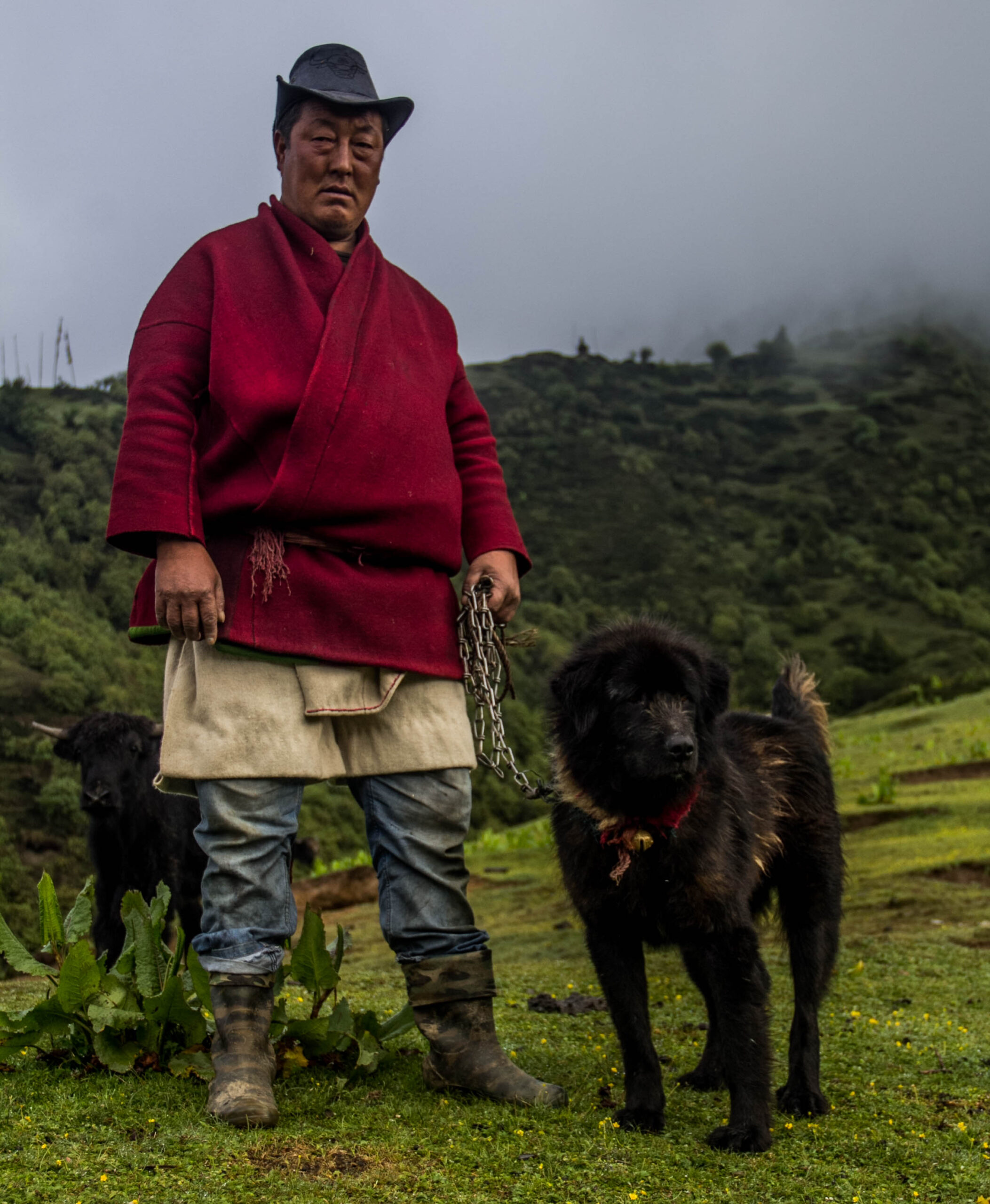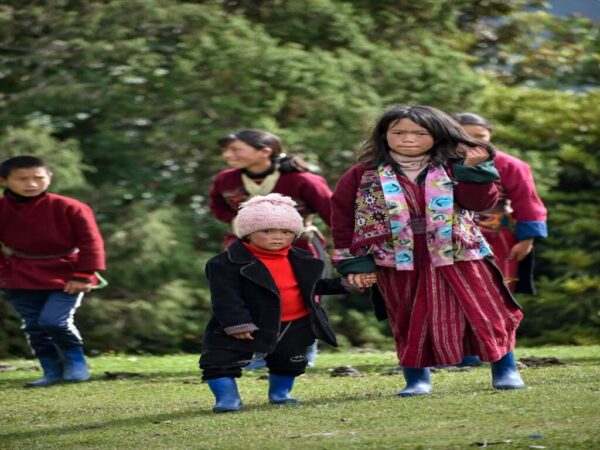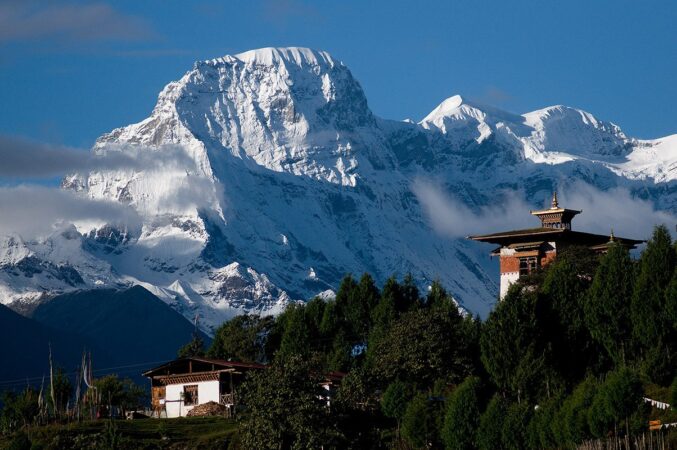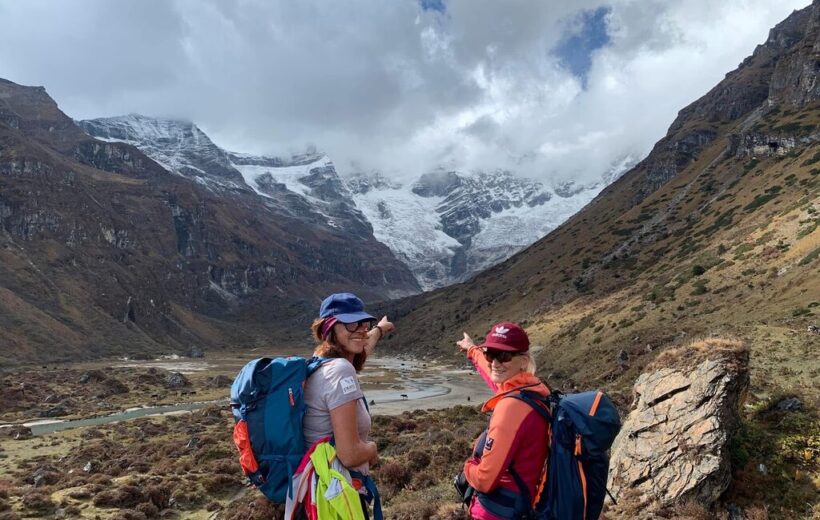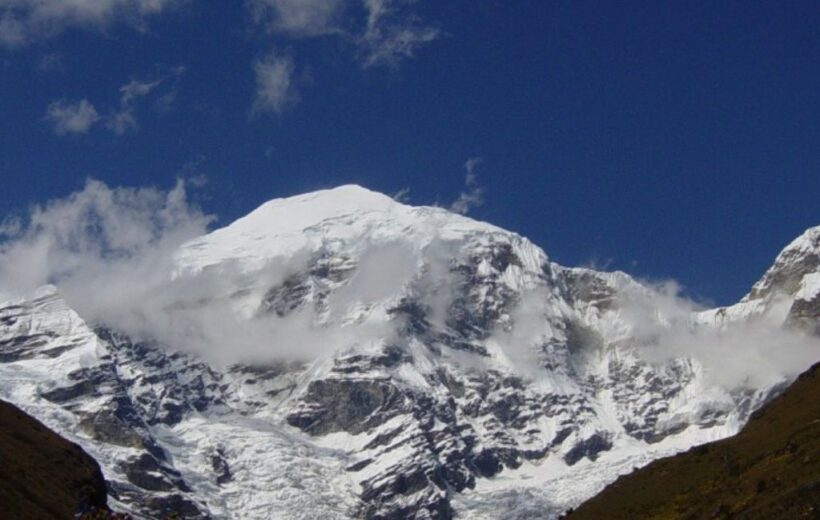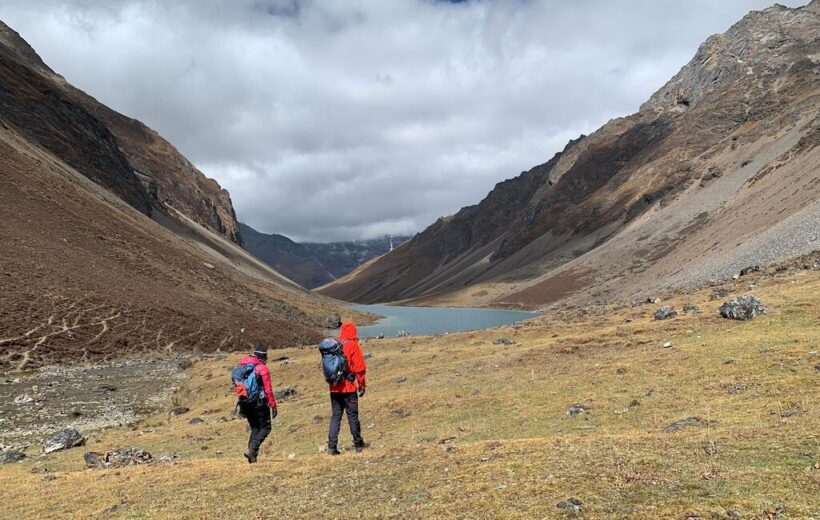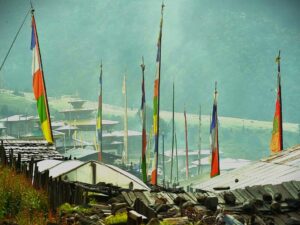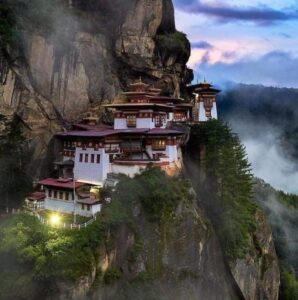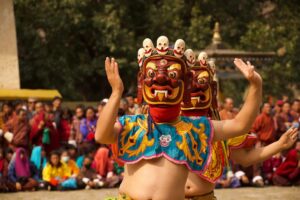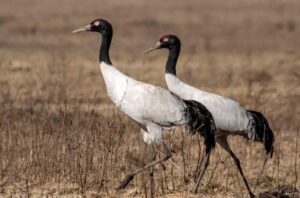Overview
This is Bhutan’s newest trek, taking you through the remote and scenic Merak and Sakteng regions, home to the Brokpa people, a semi-nomadic community with a unique culture. These villages were once isolated from the rest of Bhutan for centuries, preserving their ancient traditions, language, and way of life. The trek offers a rare chance to experience their distinct customs, yak-herding lifestyle, and vibrant festivals, all set against a backdrop of pristine landscapes, high mountain passes, and rich biodiversity within the Sakteng Wildlife Sanctuary.
Included/Excluded
- The Bhutan SDF
- All accommodations
- Meals and mineral water
- A licensed English-speaking guide
- A driver and vehicle
- Air fare
- A visa fee of US$40
- Alcohol
- Gifts/Souvenirs
- Travel insurance and personal bills
- Museums & Monument Fees
Tour Plan
Day 1: Arrive Paro
Upon arrival at Paro International Airport, you will be warmly received by a representative from Himaquest Tours. After check-in and a brief orientation, visit the National Museum and the historic Paro Dzong. Later, take some time to explore the charming Paro town before unwinding for the night at your hotel.
Day 2: Tiger’s Nest Monastery hike, transfer to Thimphu
After breakfast, begin your hike to Taktsang (Tiger’s Nest) Monastery, Bhutan’s most famous monastery, perched at 3180m. According to legend, Guru Rinpoche, an 8th-century spiritual master, flew to this site on the back of a tigress to meditate. Along the way, stop for lunch at the Cafeteria Restaurant, located halfway up the mountain. After exploring the monastery, hike back down to Paro. In the evening, drive to Thimphu for an overnight stay at a hotel.
Day 3: Thimphu Sightseeing
In Thimphu, visit key attractions such as the King’s Memorial Chorten, nunnery temple, School of Arts and Crafts, National Institute of Traditional Medicine, traditional paper factory, and the grand Tashichodzong, the King’s office. After lunch, drive to Kunselphodrang to see the 169-foot bronze Buddha statue, offering a panoramic view of the Thimphu valley. On weekends, explore the Weekend Market, where local farmers sell fresh produce by the river. In the evening, enjoy a stroll through Thimphu city. Overnight stay at a hotel.
Day 4: Thimphu to Punakha
Drive to Punakha, enjoying scenic views along the way. Stop at Dochula Pass (3150m) for breathtaking Himalayan panoramas. At Metshina Village, take a short 20-minute walk through rice fields to visit Chimi Lhakhang, the famous fertility temple of the Divine Madman. After lunch, continue to Punakha and explore the stunning Punakha Dzong, one of Bhutan’s most beautiful fortresses. Overnight stay at a hotel in Punakha.
Day 5: Punakha to Phobjikha Valley
A 30-minute drive from Punakha takes you to Wangduephodrang, known for its bamboo crafts and stone carving. The journey continues through dense oak and rhododendron forests, reaching Lawala Pass, which offers stunning Himalayan views. Descend into the breathtaking Phobjikha Valley, home to Gangtey Goenpa, the only Nyingmapa monastery in western Bhutan. In the afternoon, enjoy a hike through Phobjikha Valley, a winter habitat for the rare Black-Necked Cranes. Overnight stay in Phobjikha.
Day 6: Phobjikha to Bumthang
After breakfast, you will drive to Trongsa, the ancestral home of Bhutan’s royal family, where the first two kings ruled. The journey follows a scenic winding road, famously featured in the Bhutanese film Travellers and Magicians. After lunch in Trongsa, visit the magnificent Trongsa Dzong, a masterpiece of Bhutanese architecture. Later, continue to Bumthang, known as the spiritual heartland of Bhutan. Along the way, stop at a Yathra weaving center, where you can observe artisans crafting traditional textiles with unique Bumthang patterns. Overnight stay in Bumthang.
Day 7: Bumthang cultural sightseeing
Spend the day exploring the cultural and spiritual sites of Bumthang, a region rich in history. Visit Jakar Dzong, known as the "Castle of the White Bird," and explore Kurjey Lhakhang, a sacred temple linked to Guru Rinpoche, who introduced Tantric Buddhism to Bhutan and Tibet. Discover the ancient Jambay Lhakhang, built in the 8th century, and Tamshing Lhakhang, founded in 1501 by the revered saint Pema Lingpa. In the afternoon, take a leisurely stroll through Bumthang town, engaging with the friendly locals. Overnight stay in Bumthang.
Day 8: Bumthang to Mongar
The drive from Bumthang to Mongar offers stunning views of steep cliffs and cascading waterfalls. The journey takes you through the picturesque Ura Village before climbing to Thrumshingla Pass at an elevation of 3,800 meters, where you can enjoy breathtaking mountain vistas. Afterward, the road descends to Kuri Zampa at 580 meters above sea level, passing through diverse vegetation. From here, the route ascends once again, climbing approximately 1,100 meters to reach Mongar, perched on a hillside. Take some time to explore Mongar town, which offers a glimpse into the unique lifestyle of the local people, distinct from those in central and western Bhutan. Overnight stay in Mongar.
Day 9: Mongar to Trashigang
Today, you will travel to Trashigang, enjoying the views as you pass through various picturesque villages. Once you reach Chazam Bridge, take a side trip to explore Gom Kora Temple, a revered site where Guru Rinpoche is said to have meditated. The temple is famous for the imprints of his thumb, hat, and body found on a rock nearby. Afterward, resume your journey to Trashigang, where you can explore the local town. Overnight stay in Trashigang.
Day 10: Trashigang to Chaling to Donmang Chu (Trek starts)
Today, you'll travel to Chaling, passing through Radhi village, where you'll meet your trekking team and pack animals. The hike begins with a steady climb toward Shaktimi meadow, where you'll encounter yaks and sheep grazing, with traditional yak herders' huts perched on the hillside. From here, continue your ascent until you reach the Mendula Pass at 3354m. Afterward, descend through a lush rhododendron forest, making your way to Donmong Chu at 3124m, where you'll set up camp for the night.
Day 11: Donmang Chu to Merak
The trek from Domong Chu to Merak covers 10 km in about 4 hours. The trail mostly follows the river's curves, with a gentle climb in the final stretch before reaching Gangu village. After a 45-minute walk from the village, you'll arrive at Merak, situated at 3520m. Your campsite, located just before the village, offers stunning views of the surrounding mountains and the village itself. After setting up camp, take the opportunity to visit the village and interact with the locals.
Day 12: Merak to Miksateng
Today’s trek, covering 14 km in about 6 hours, is the most challenging of the journey, taking you over the highest point, Nachungla Pass, at 4153m. The day begins with a gradual climb from the campsite to the first pass at 3900m, where you can catch a final view of the Merak Valley. From here, the trail continues through juniper and rhododendron forests, leading up to Nachungla Pass. After reaching the pass, the descent begins, taking you to Miksateng at an altitude of 3079m.
Day 13: Miksateng to Sakteng
In about 5 hours, you'll trek 14 km, beginning with a descent to the river, followed by a riverbank walk for several hours. The trail then ascends gradually to a hill with a small Chorten, overlooking the Sakten Valley. If you’re lucky, you may spot a red panda in the area. The trek concludes with a descent to the outskirts of Sakten village, where your camp for the night is set up at an altitude of 2950m.
Day 14: Explore Sakteng
Visit Sakteng village, home to the indigenous Brokpa people, and immerse yourself in their unique nomadic lifestyle. As you wander through the village, you’ll discover their vibrant customs, traditional dress, and strong cultural ties to the land, shaped by centuries of yak herding and farming. The Brokpa people live in harmony with nature, preserving ancient rituals and customs that remain largely untouched by modern influences. Explore their stone houses and interact with the locals to gain insight into their deep connection to the environment and their semi-nomadic way of life. This cultural immersion offers a rare opportunity to learn about the traditions and daily routines of one of Bhutan's most unique communities.
Day 15: Sakteng to Joenkhar Teng
Today’s trek covers 17 km over 7 hours, with a gentle climb and significant descent. Starting early from camp, you’ll leave Sakteng and take a short climb up to a small hill on the western edge of the village. From there, descend toward the river and follow its path through lush broadleaf forests. The campsite is located in a peaceful meadow near Joenkhar Teng village (1733m). Joenkhar Teng is perched on a hillside, home to the Brokpa and Sharchopa communities, and features a local school and outreach clinic. Overnight stay in camp.
Day 16: Joenkhar Teng to Trashigang (Trek ends)
On the final day of the trek, start with a brief climb through Joenkhar Teng before crossing a few suspension bridges and taking short ascents to reach Phongmay. Here, you'll meet your transport for the drive to Trashigang. Along the way, visit the picturesque villages of Radhi and Tsangkhar, known for their exquisite "bura" gho and kira, textiles made from raw silk. A bit further, stop at Rangjung to explore the Ranjung Monastery, founded by HH Garab Rimpoche. Upon arrival in Trashigang, check into your hotel for an overnight stay.
Day 17: Trashigang to Samdrup Jongkhar
After breakfast, drive to Samdrup Jongkhar, passing Sherubtse College with its scenic views. Stop at Khaling to visit shops and interact with locals, then enjoy lunch at a local restaurant. Continue through villages, forests, and landscapes until you reach Samdrup Jongkhar. Overnight in a hotel.
Day 18: Samdrup Jongkhar to Guwahati, India
After breakfast, drive to Guwahati, the capital of Assam, enjoying scenic views of tea gardens, rivers, and villages along the way. In Guwahati, you will catch a flight to your next destination.
Tour Map
You may like
Frequently asked question
Itinerary is always flexible if you are travelling in a smaller group. You have a choice of eating in a different restaurant, however, the menu depends on the chef and usually it is a set menu but not necessarily the same menu every day.
It is in the tourism industry but it is not compulsory. It actually depends on the service rendered to you.
Yes, things that are not included in the tariff are all beverages, telecommunications, tips, laundry, massage and souvenir shopping.
Bhutan is well connected and every town has IDD services. Internet cafes are available almost everywhere. Cell phones can also be used but you need to get Bhutan prepaid SIM Card and recharge it. Recharge vouchers are available at every second shop in town.
You can exchange money in the banks as well as in the hotels were you are staying. Rates will be better in the banks plus US$ is acceptable in almost all of the shops in town.
It cannot be safer anywhere else in the world.
Bhutan is all season tourist destination for cultural tours. However the month of February, March, April, and September, October, November are considered the best time due to pleasant weather conditions. December and January are winter months and June, July and August, the rainy season. It is important to note that the climatic conditions during the winter months are not extreme. The average temperature would range from 10-17 degree Celsius during day time.
The money you have transferred will be with held by the Tourism Council of Bhutan till the day you depart. Travel Agents can only withdraw the money after your departure upon submitting your tour invoice. Therefore, your money is safe.
It is government rule that total tour payment must be remitted without which the government will not issue the visa.
Decide the number of days you want to spend in Bhutan according to your interest and budget.
Decide the date and the port of entry (You can fly into Bhutan from one of these cities; Bangkok, Katmandu, New Delhi, Calcutta and Dacca) into Bhutan.
Fill up the visa application form (You can download the visa application form here).
Remit the total tour payment (You can download the money transfer details here). It is government rule that total tour payment must be remitted without which the government will not issue the visa.
Once we have confirmed dates, port of entry, dully filled visa application form, and money received, we will process your visa.
Except for travelers from India, Bangladesh and Maldives, all visitors to Bhutan are required to obtain visa approval prior to their arrival, which will be processed by us.
Tourism is not restricted but the minimum daily tariff is set by the government. It is also necessary that all tourists must come through a registered tour operator to plan your itinerary and process your visa. Tourist cannot come on their own unless they are invited guest.
Druk Air operates daily flight (once daily) from Bangkok (Thailand) and four flights a week from New Delhi, Kathmandu and Calcutta (India) and two flights a week from Dacca (Bangladesh). There are different flight schedules for the summer and the winter seasons. For Druk Air schedules click on Flights Details or you can also visit Druk Air web site at www.drukair.com.bt . You can also enter Bhutan via Bagdogra Airport, Siliguri (West Bengal) in India. It has regular flights from New Delhi (twice daily).
Bhutan is connected to the outside world through Druk Air (Royal Bhutan Airlines), the national carrier which is the only airline operating flights in and out of the kingdom.

